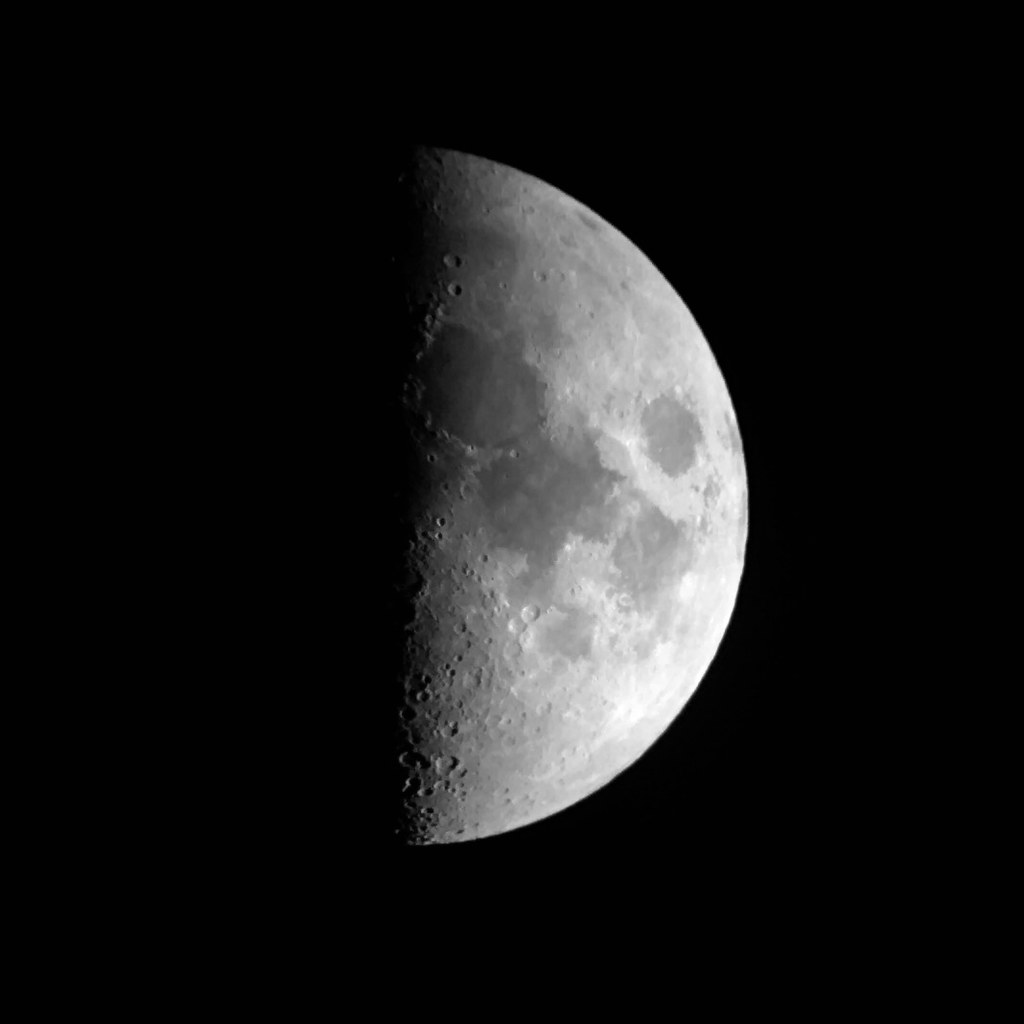Wayward Stargazer
 iPhone image through eyepiece of Zhumell 25 x 100 binocular
iPhone image through eyepiece of Zhumell 25 x 100 binocular
Last night, the night of the Jupiter/Saturn conjunction, I spent out on the streetside with the Zhumell 25 x 100s on a Bogen tripod, which gave a very crisp view for family and passersby. I did try a few iPhone snaps through the eyepiece, but nothing to write home about, except for the moon photo above.
The Zhumells are individual eyepiece-focus, you have to adjust each eye separately, so I adjusted them for my corrected vision while wearing glasses, and that seemed pretty close for most people. Luckily there's enough eye relief that I can see a full field of view even wearing glasses.
Tonite, a day later, I used my Panasonic Lumix G5 camera with Tokina 70-200 F/2.8 lens, to try for a better view of the planets. This isn't really astronomy-grade imaging gear, the resulting image is barely comprehensible, but here it is:

And here's the kit:

I've always been attracted to visual astronomy. The allure of digital imaging doesn't tempt me; if I wanted a nice image of some distant galaxy I can see a Hubble Telescope view online. Oh, I certainly understand the idea of stretching your imaging skills as much as possible, but often these days it's a race to who can spend the most bucks, and I'm not interested in that game.
The observing skills I'm most interested in involves learning the night sky, and learning to see astronomically. Which, I remind myself, can only happen when you get out there under the stars.
How about you; do you stargaze?
Labels: astronomy

2 Comments:
Congratulations on being able to see the conjunction. We had rain. What I could see a night ago and on several nights was disappointing and not as bright as the one I saw while in Florida about 20 or so years ago. That one was quite a bit brighter. Latitude difference?
I like to use the SkyView app. I can "stargaze" from the couch. I find it interesting knowing where the planets, sun, and moon are at any given time, day or night. Sometimes when I take the dogs out, I'll grab my binoculars and take a gander. The wife and I used to attend a series of events at the local college's planetarium. That was a lot of fun. You should definitely look into the SkyView app, though. It's amazing!
Post a Comment
<< Home